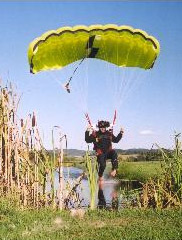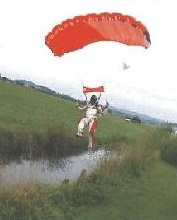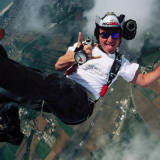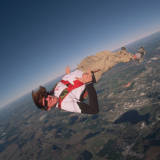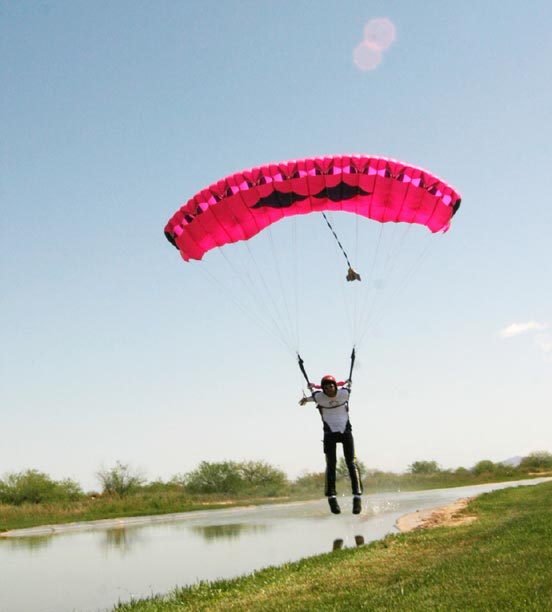-
Content
-14 -
Joined
-
Last visited
-
Days Won
1 -
Feedback
0%
Content Type
Profiles
Forums
Calendar
Dropzones
Gear
Articles
Fatalities
Stolen
Indoor
Help
Downloads
Gallery
Blogs
Store
Videos
Classifieds
Everything posted by admin
-
Since Mirage Systems has a soft spot for the troops, we’d like to offer a special discount to any soldier (U.S. or Coalition) currently or recently deployed in Iraq or Afghanistan that wants to order a Mirage Systems container for personal use. We’ll need verification of qualification, including proof of deployment. Qualified participants get a base container discount of 50% and a 15% discount on options. Any participants can contact Mirage Systems directly at 386-740-9222 or e-mail at sales@miragesys.com. This offer is good until further notice.
-
-
-
As many of you already know, on Friday, August 13th, the category 4 Hurricane Charley hit Florida's west coast with winds of 145 mph. It cut through the state, right through Lake Wales, destroying the Florida Skydiving Center. The US CF Skydiving team was at Florida Skydiving Center, practicing for the upcoming World Championships in Croatia next month, when the hurricane hit. Thank God no one was killed or injured at the drop zone, although we are getting reports now that, so far, 16 people throughout Florida were killed by "Charley". The past two days, the US team has been there with the owner, Betty Kabeller-Hill and Roger Hill, going through the debris, searching for whatever they can salvage and cleaning up the terrible mess left by this destructive storm. They've had no power in the area for 3 days now and their cell phones are not getting a signal. Raul said the top half of the tower was on the ground. The phone line is working now. Betty said half the hanger is gone. "We've lost everything", she said. She also told me that there is no insurance. Some of the Mobile homes at Florida Skydiving Center were smashed to pieces and some were flipped over. People who lived at the drop zone are now homeless and I guess jobless too. The Skydiving community has been a family, always helping each other out in times of need. Here is an opportunity for us to reach out and help these people, our family, in their time of suffering and need. We've set up a "Florida Skydiving Center Disaster Fund" and a "FSC Employee Disaster Fund" for the people who lost their homes there. If you can help, please specify on your check or money order, the Disaster Fund you are contributing to and send your donation to Betty's home at: Florida Skydiving Center c/o Betty Kabeller-Hill 400 El Camino Drive #203 Winter Haven, FL 33884 If you want to use a bank wire transfer, Florida Skydiving Center already had an account set up for event registrations that you can use. Just specify in the Special Instructions that it is for the Disaster Fund. The account for bank wire transfers is: Wachovia Bank Routing # 063000021 Acct. # 2090002569803 Acct. name: Phoenix Air, Inc. If you have any questions, you can call the Florida Skydiving Center at 863-678-1003. Keep in mind that they are overwhelmed and hard at work trying to clean up. Anyone who can come out to help in the cleanup efforts, your help will be appreciated. Thanks! Gail Ramirez Forum Discussion and Updates PayPal Donation Information Lake Wales, Florida Skydiving Center Web Site
-
In any aviation activity proper flight planning is critical to safety, and skydiving is no exception. If you take the time beforehand to plan for various eventualities, you don't waste precious time making decisions when they arise. Preflight Familiarize yourself with aerial views of the DZ and surrounding area, if they are available. Note locations of obstacles and pick likely outs for bad spots in various directions. Check weather reports, if possible, and note forecast winds at altitude, cloud conditions and any approaching fronts. You are less likely to be blindsided by rapid changes in conditions when informed of their likelihood. Turn on your AAD, if so equipped. Make sure your hook knives are accessible. Find out who on the formation has audible or visible altimeters, AADs and RSLs; make sure they are all operational and properly initialized. Check your and your partners' gear. Make sure you are in agreement on breakoff and opening procedures and altitudes. Face into the wind and see where the sun is. Its position should be the same when you are on final and there is no wind indicator available. Exit Know what groups are around you, what they are doing and what delay is planned between groups (ask around before and after boarding). The Skydive Arizona policy of large to small slow-faller groups, followed by large to small fast-faller groups, followed by students, followed by tandems is the best all-around approach in the business. The more of a delay between groups you can arrange, the better. DO NOT assume that any reasonable delay is reason not to pay attention to other groups in the air - LOOK AROUND! Freefall Dock gently, from the level of the formation. DO NOT swoop into a formation, but make the final approach smooth and deliberate. DO NOT EVER get above or below a formation. Inadvertent deployment can become fatal fast if people are above each other. If low, stay near and to the side of the formation until breakoff. Do NOT begin tracking before breakoff altitude, and DO NOT do anything to increase vertical separation.. Track flat at a common level. DO NOT drop out of a formation vertically. If you have an inadvertent deployment when you are below the formation, the likelihood of someone getting killed is significant. The greatest likelihood of an inadvertent deployment is right after exposing the pilot chute pouch to direct air stream - like when dropping out of a formation in a stand-up. Track to a clear sector while watching the people on either side. While flat tracking, it is easy to split the difference between the people to either side by looking under your arms. Canopy Flight Open at an appropriate altitude. Between two and three thousand feet is reasonable for a high traffic event; any higher opening (for CRW or whatever) should be arranged with the pilot. Do NOT spiral down through a high traffic area. If spiraling to lose altitude, get well off the wind line to stay clear of the spot for other groups, and LOOK AROUND. In a turn, the direction of most likely collision is at the leading edge of the canopy in the direction of the turn, and there is a blind spot where a collision may occur between jumpers whose canopies blocked their view of each other until right before the collision. I reiterate - SPIRALING IN HIGH TRAFFIC IS DANGEROUS! The safest flight path when opening above the landing area is to fly the canopy away from the landing area, perpendicular to jumprun, until far enough out to allow a long, shallow approach to the landing area (leave enough room for obstacle clearance). LOOK AROUND NEAR THE GROUND! Don't fixate on your landing, but pay attention to who is in the area. Keep your head on a swivel, and periodically scan for potential traffic. Do not execute unplanned turns near the ground. If you are cut off on final, executing an avoidance turn must not be a possible response. Landing The safest landing areas are the least popular ones with the most outs. Landing in congested areas or where ground traffic is allowed (e.g., the camping area) can be an invitation to disaster. If you must turn for traffic or obstacle avoidance while setting up to land, use a FLAT TURN. If you don't know how to do so, find out from someone experienced in the maneuver and practice at altitude until you have the procedure wired. Keep your head on a swivel after touchdown. Even if you land under complete control, you might want to dodge someone who is swooping where they should not.If landing out is inevitable, or if safely making it to a designated landing area is in doubt: Pick an open area in which to land by 1,000 feet (300 metres). Corn can be over 12'(4m) tall (a cornfield is NOT like an unmown lawn), so landing between rows and preparing for a PLF will reduce the likelihood or extent of injury. Any changes of color on the ground probably have barbed wire along the boundary. Land parallel to any area changes. Locate any telephone poles or other wire supports by 500 feet (150 metres), and set up to avoid the wires that are sure to go between them. Identify the lay of the land by 500 feet (150 metres), and set up to land alongside any hills. Do NOT land uphill or downhill, REGARDLESS of what the wind is doing. If there is any doubt about the landing surface, or if you are sure to have excess speed on touchdown (like when stuck with a downwind landing) execute a PLF and roll out the landing. Keeping feet and knees together, and not using hands or elbows to break the fall can greatly help avoiding injury.
- 1 comment
- 2
-
- boogie safety
- safety
-
See more
Tagged with:
-
-
The winter is coming and you’re thinking about where you're going to jump to clear your winter doldrums. When you get to where you want to jump, everybody needs to freshen up their skills, maybe learn some new ones. One of the most popular skills to learn is Headdown. As a coach I have seen a lot of ways to learn the position. Some people, if you manually stick them in the position and hold them there, will learn it in a few jumps. Other fliers don't have it so easy. Well this article is for you! We will learn what to concentrate on in the Headdown position, but more importantly how to work around the problem with other skills, which I think contribute and can sculpt the Headdown position. These skills being back flying, flat back tracking and flat belly tracking. HeaddownHeaddown is probably the most technical of the freefly positions. It requires balance, skill, strength, and a refined technique. I teach the straddle position first, because it is easier to balance and conceptualize early on. You should have your head, shoulders, hips, and ankles completely in line. Your head should be pointing straight towards the Earth with your field of view consisting of the horizon with a half sky/half ground ratio. People who fly on their bellies a lot usually have a huge arch in their torso, which causes them to go to a back track, or belly track (we will get to how that is important later). Others usually have a kink in their hip so their shoulders and head are in one plane and their hips and ankles in another plane. This causes a steep track on their belly. Most of the concentration, once you have acquired the skill of keeping your body all in one plane, should be concentrated on the hips, legs and feet. First, You should have tension in your butt so you are straight, this can fix the hinged at the hip problem addressed above. Second, you should squeeze your quads taught so they push outwards, but remain in the same plane as everything else and keep the full extent of your leg straight. Third, you should have your toes flexed up towards your head. Picture yourself hanging from a bar upside down by your feet. You should feel air on your toes when you get it right. Pressure should be felt on your toes much like someone standing on your feet. Once you have the straddle position, the progression calls for 360 turns both ways, forward and backward motion, and then docks. We won't get into the technique of daffy Headdown, but it is extremely useful to slow down, fly in the tunnel with the lower speeds, and for heavier people to fly with others. Back FlyPeople often ask why they need to learn to fly on their back. The answer is simple. Headdown is a balance between flying on your back and on your belly. When the Headdown position is correct, no wind should be felt on your back or belly. This position requires the awareness of air being on your back or belly, so you can achieve no air on the torso. Since most people can fly on there belly relatively well, then it is imperative for you to learn how to fly on your back to acquire the Headdown position. The back fly position can be attained in the tunnel first, because it is much safer. Start on the grate. Relax your torso so it is convex. Put your hands above your head, and relax them. Do not push down towards the grate unless you want to slow down, or go up! Let your head relax and sit in line with your torso, while looking straight above. Keep your hips 90 degrees just like sitting in a chair. Keep your legs wide for stability. Back fly also has many everyday uses. Flying with tandems on your back is not only fun, but honestly the best video angle. When you are flying with an inexperienced sit flier and they cork you can match their speed on your back, until they can get vertical again. Lastly, you can use back fly to fly with relative workers, or once again get an interesting camera angle from below. Two words of caution! First, tighten up your rig when you fly on your back because the rig tends to shift from the wind below and can turn you. Second, I do not recommend flying on your back with other people unless you can competently fly in the wind tunnel on your back with a coach, as not to cause a huge difference in speed and thus a high speed collision. TrackingWhen first learning the Headdown position people either track towards the coach or away. I think it is very useful to learn to flat track on your belly and back. If you learn to fly both positions well with a coach, then control of the Headdown position is easier. Belly flat tracking is a little different than the steep track taught in the majority of AFF programs. A flat track has the ankles, hips and shoulders all in one plane. The progression suggests to learn to turn left and right, adjust your fall rate with your torso, and finally increase your speed with your legs. Turn left and right with your arms first as to make the adjustment slow. Then start to adjust the trim of your body for more powerful turns. Adjust your fall rate in tracking by arching to go down, and cupping with your torso to go up. Lastly, squeeze your quads tight for speed. Back tracking is fun and challenging. It can be used in Headdown, to track up to formations and to close huge distances. Make sure to slow down well before you reach your target. The first problem most people have when they back track is they have a kink at the hip. This creates more of a back fly rather than a track. Squeeze your butt, or push your hips forward to get flat. To gain more speed, put your legs together and press your ankles down slightly. With all these positions and abilities under your belt, Headdown will be easier to learn. The awareness and skills you learn from these alternate positions can in the end help you conquer Headdown. Remember, try to freshen up with a coach and in the tunnel before you start flying with other people. Headdown, along with these other positions is never easy, but persistence mixed with awareness and the right guidance always pays off. Swoop high, don't lag on jump run, and pack your instructor's parachute. Later! The New School Fligh University Web Site Steven Blincoe is the founder of The New School Flight University in Lake Wales, Florida. He has 4,000 jumps total and 300 hours of Skyventure Orlando wind tunnel time. If you would like to contact him you can at blincoe.org, or 530-412-2078.
-
All you have to do is register to become a Dropzone.com member. After registration, come back to the galleries and Sign in using your new Dropzone.com username and password. You log into the galleries by clicking on the Sign in button on the right hand side of the page. After you log in the first time your Personal Gallery will automatically be created in this section.
-
Yes. Use the links in the left navigation bar to create, move, delete and rename a category. You can create as many sub-directories as you want to organize your images.
-
Sign in and click on the "Upload Photos" link int the left navigation bar. Simply browse to the image on your hard-drive, select the category you want to post it to, and submit it.
-
You can upload images of up to 2 MB in size! All images will be automatically reduced to be 550 pixels on the long end so uploading should be a lot quicker (and you will help me save bandwidth!) if you size your images to somewhere in this range yourself. They are all saved as JPG files at 85% quality. Thumbnails are also automatically created.
-

Do I have to fill in all the IPTC information when I upload a photo
admin posted an article in Photo Galleries
No. You do not have to fill in all the information in the IPTC information box after an upload. In fact, you don't have to fill in anything. We suggest you fill in as much as you can though to give people some context on your photo. Search keywords are useful as well. See the section called "What kind of photos can I upload?" below for another reason why you should fill in some of this information. -

Why does it say "Pending Approval" after I upload my photo
admin posted an article in Photo Galleries
To prevent people from abusing the galleries all images will be approved by a moderator before they are posted out to the galleries. This should happen on a daily basis. -
The short answer is: skydiving related photos. To make sure the moderator doesn't delete your upload, make sure you submit only skydiving related images. Photos of boogies, skydiving parties, people you got to meet skydiving and of course all photos in the sky are welcome. This is another reason to provide some context with your image so the moderator knows what it is about if it's not obviously skydiving related.
-
Yes. Go back to your gallery and view your thumbnails. Click on the under any photo and a window will pop up that will enable you to add more information to the photo.
-
Make sure you have are logged in. Browse to your gallery and view your thumbnails or the full photo. Click on the under any photo and follow the instructions to delete the photo.
-
Yes. Go back to your gallery and view your thumbnails. Click on the under any photo and follow the instructions to rename the photo.
-
You can send any of your photos as an electronic postcard. View the full size photo and click on the "Send as a Postcard" link at the bottom of the page under the photo.
-
The Dropzone Database is a database of DZs from all over the world. Anyone can list a DZ but most of these listings are entered and maintained by either the DZO, manager or webmaster of the particular DZ. Dropzone.com does not add DZs to the database nor do we maintain the the data. To have your DZ listed someone from the DZ needs to register, list it and maintain the listing for accuracy. Any registered Dropzone.com user can write a review of a DZ they've visited.
-
If you have not done so already you need to register a new Dropzone.com user account. You don't have to create a username and login for your DZ, just log in as yourself and list your DZ. The DZ listing will then be associated with your username and you can come back and make changes and updates as often as you like in the future. To list your DZ, login to Dropzone.com and click on the "Dropzones" link in the top navigation bar on any page to go to the Dropzone Database. Click on the "Add a DZ" link at the bottom or on the right side of the Dropzone Database page. Enter your DZ information as accurately and complete as possible in the form provided. Remember to select a Region/Country and (if in the US) a State that your DZ is in. If your country is not listed, contact support and Dropzone.com and we'll add it.


